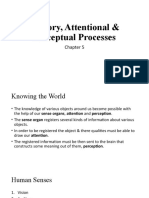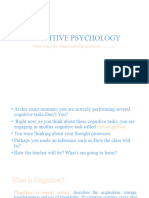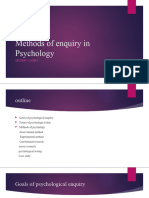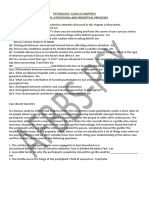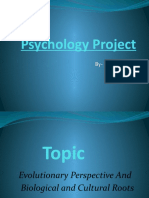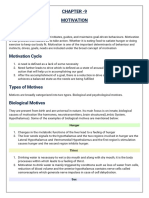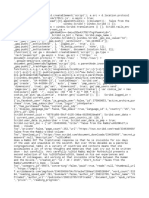0% found this document useful (0 votes)
311 views5 pagesSensory, Attentional & Perceptual Processes: Main Highlights
This chapter discusses sensory, attentional, and perceptual processes. It describes sensation as the initial experience of a stimulus registered by the senses. Attention involves selecting stimuli from the environment. Perception is interpreting stimuli and giving them meaning. The chapter also discusses functional limitations of the senses, attentional processes like alertness and concentration, and theories of attention. It defines sustained and selective attention and factors affecting them. Perceptual processes like bottom-up and top-down processing are also explained along with factors influencing perception and laws of perceptual organization.
Uploaded by
Ritu DahiyaCopyright
© © All Rights Reserved
We take content rights seriously. If you suspect this is your content, claim it here.
Available Formats
Download as DOCX, PDF, TXT or read online on Scribd
0% found this document useful (0 votes)
311 views5 pagesSensory, Attentional & Perceptual Processes: Main Highlights
This chapter discusses sensory, attentional, and perceptual processes. It describes sensation as the initial experience of a stimulus registered by the senses. Attention involves selecting stimuli from the environment. Perception is interpreting stimuli and giving them meaning. The chapter also discusses functional limitations of the senses, attentional processes like alertness and concentration, and theories of attention. It defines sustained and selective attention and factors affecting them. Perceptual processes like bottom-up and top-down processing are also explained along with factors influencing perception and laws of perceptual organization.
Uploaded by
Ritu DahiyaCopyright
© © All Rights Reserved
We take content rights seriously. If you suspect this is your content, claim it here.
Available Formats
Download as DOCX, PDF, TXT or read online on Scribd
/ 5
